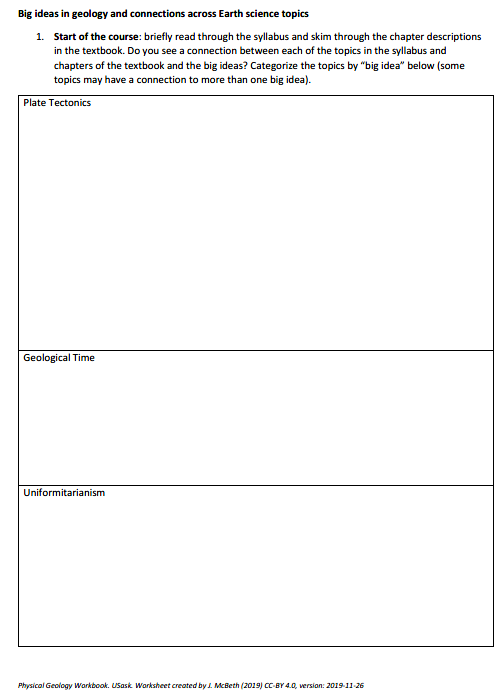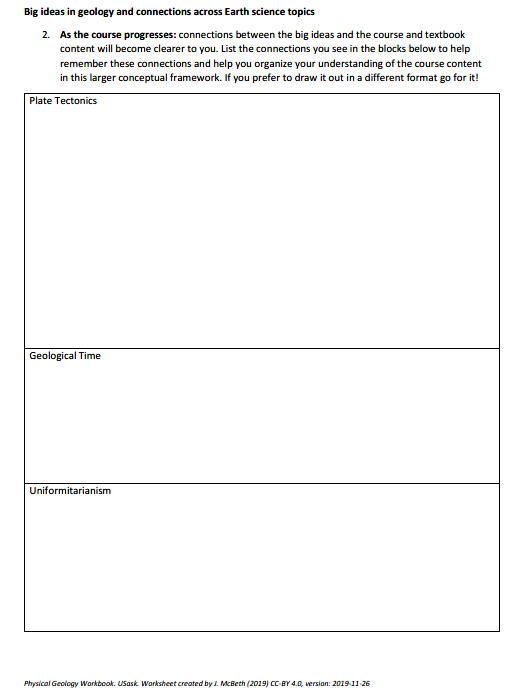1.3. Introduction to Geology – Review Questions
- What is geology?
- What is the scientific method?
- What is the difference between a hypothesis and a theory?
- What is the relationship between the scientific method, hypotheses, and theories?
- Describe some of the ways geologists study the Earth.
- Give an example of how geology has impacted each of the following:
- the rise and fall of nations and empires
-
- war
-
- migration of people and animals
-
- where people build communities
-
- technology and innovation
-
- fashion
-
- health
- Examine the geologic time scale in Figure 1.6 of the textbook.
- What are the units for measuring time on geological time scales?
-
- How is time broken down into parts in the time scale? [hint: look at the line that begins with the word “age” in the figure]
-
- Look at the scale bar in each age column of the timescale. How does the scale bar differ between the Cenozoic, Mesozoic, Paleozoic, and Precambrian?
- Summarize the theory of uniformitarianism.
- Briefly describe the theory of plate tectonics.
As we move through the course I encourage you to reflect occasionally on how each topic in the course ties into the big ideas of geological time, uniformitarianism, and plate tectonics. The worksheets below (pdf version) can be used to to help you organize your understanding of the geological concepts you are learning, by placing each topic into this larger conceptual framework of the big ideas in geology.



